
 |
Recent Books by Forum Members |

 |
 |
|
|
|||||||
 |
|
|
Thread Tools | Display Modes |
|
#1
|
||||
|
||||
|
I cannot see that the Forum has a specific section for Museums, so I have inserted this topic in the Other military Topics section.
I was blessed whilst on a trip to Croatia & Austria during October, to have been able to spend a morning in the Heeresgeschichtliches Museum in the city of Vienna. This is an absolutely SUPERB museum exhibiting a great variety of artifacts from the military history of Austria & primarily during the Hapsburg dynasty. Being a naval collector I was primarily interested in the K und K Marine (Imperial & Royal Navy), but I was able to view the Great War displays & particularly the Sarejevo display, these being located on the main(ground) floor. I did not have the time to get up to the second level, perhaps next time! You would require at least the full day to view the entire building. The museum is very large, being housed in what was once the Arsenal of the K u K monarchy. Construction commenced in 1848. The museum survived both world wars but sustained considerable damage from bombing during 2WW. Complete rebuilding commenced in 1946, many of the exhibits being redesign & reworked to what they appear today. To quote from the catalogue: "the collection exhibited in the main building, which has kept its character as a total work of art up to the present day, portrays about 500 years of Austrian & European history, and thousands of original and unique objects shown represent an integral part of the cultural heritage of the world." The displays were stunning & I was able to take many photos. I would like to share some of the photos I took of the exhibits I viewed & I will try to add photos as time goes on... Please enjoy! Bryan Firstoff, a view of the outside of the Museum: 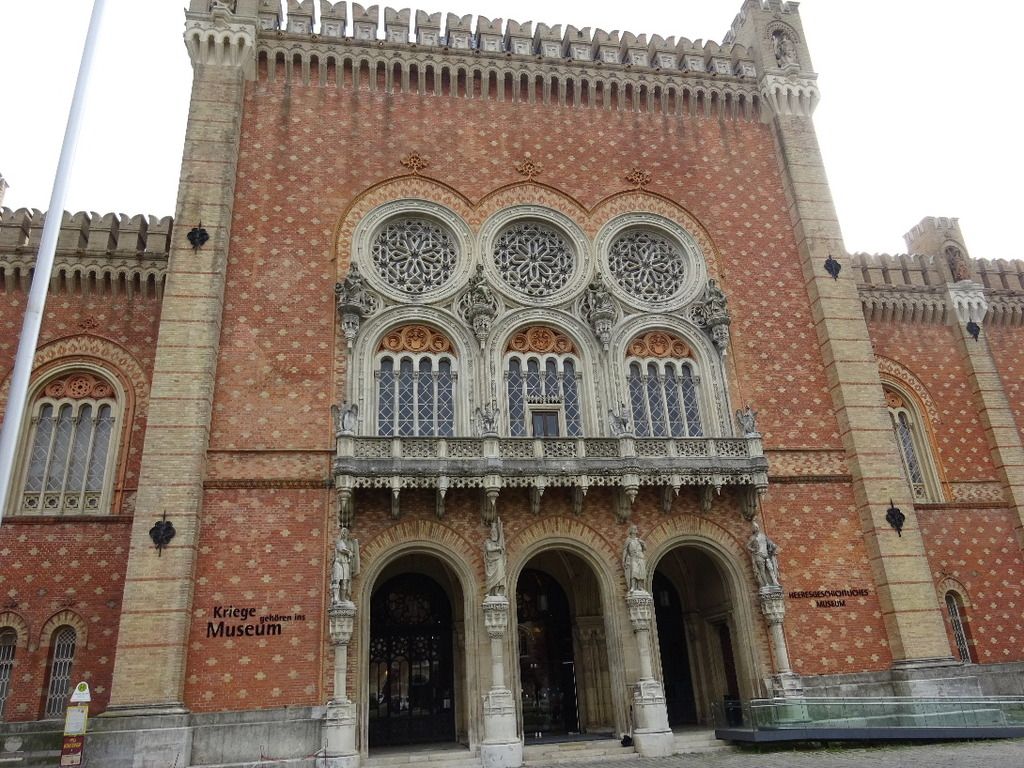 There are two long side halls leading off from the main building: 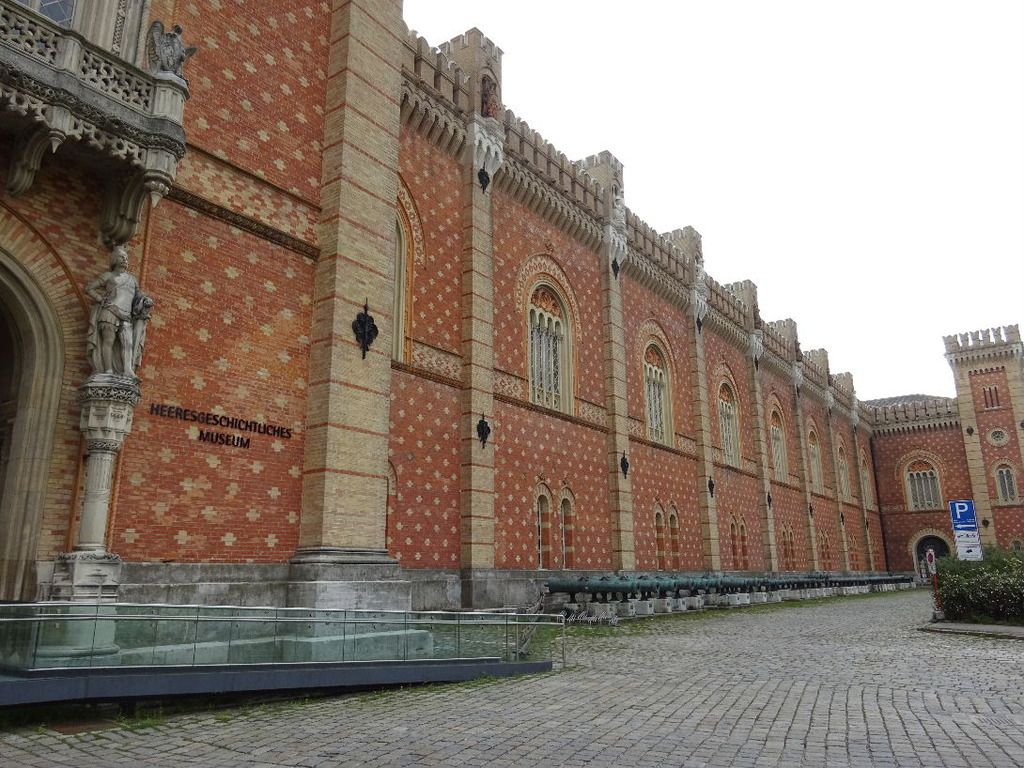
|
|
#2
|
||||
|
||||
|
|
|
#3
|
||||
|
||||
|
Thanks for this Bryan. It looks very impressive. Can't wait to see the rest of your photos.
Ian
__________________
The day the government succeeds in taking away our dress uniforms, badges and colours, and all the so called "non-functional" items; they will find themselves with an army that cannot defend them. Robert Heinlein, "Starship Troopers" |
|
#4
|
||||
|
||||
|
|
|
#5
|
||||
|
||||
|
|
|
#6
|
||||
|
||||
|
Great photographs hope to visit one day
Sincerely Stephen |
|
#7
|
||||
|
||||
|
|
|
#8
|
||||
|
||||
|
Yes, very nice. I could see myself spending a whole day there.
Thanks again. Ian
__________________
The day the government succeeds in taking away our dress uniforms, badges and colours, and all the so called "non-functional" items; they will find themselves with an army that cannot defend them. Robert Heinlein, "Starship Troopers" |
|
#9
|
||||
|
||||
|
Nice pictures.
BTW, it is k.u.k. not KuK. And it is only k.u.k. in the case of a gemeinsames Heer/common army unit. The Landwehr unit above is not a gemeinsames Heer one, but from the German part of Österreich-Ungarn/Austria-Hungary. Thus it's title is k.k. Landesschützen-Regiment „Innichen“ Nr. III where k.k. means kaiserlich (for Österreich/Austria) königlich (for Böhmen/Bohemia). The third "army" of the double monarchy was called k.u. (königlich hungarisch/royal Hungarn). The place name Innichen was Trient before1909. Yes, it is not an easy army to study  Oh yes. The beautifull uniforms in the first few pictures are not for the line cavalry. If I am correct, I see the k.u.k. Trabantenleibgarde (red and gold in the first picture) and in the second picture at left the k.u. Leibgarde. These guards were not just "field" regiments with guards status, but more palace guards, attending, keeping order and guarding royalty and their guests at all sorts of ceremonies in and outside imperial-royal palaces, gardens, etc.. A bit like the Yeoman of the Guard I assume.
__________________
Henk Interested in the lineage of the unit your badge represents? Try: Regimental lineages Last edited by Wmr-RHB; 08-11-16 at 09:44 AM. |
|
#10
|
||||
|
||||
|
|
|
#11
|
||||
|
||||
|
Quote:
I visited the museum long ago and have already forgotten most of it. I love the pictures you posted. And the Guards uniforms show some of the pomp and circumstances of the Habsburg court. As additional information for all interested: the k.k. Landesschützen-Regiment Nr. III was a sort of specialist unit. It belonged to the k.k. Gebirgstruppe. Alpine troops, specialy trained for the defence of the mountain borders of Voralberg, Tirol and Kärnten to the south (the Italian Alpini were raised earlier). The Edelweiss flower badge worn by them is not only inherited by present-day Austrian Army alpine troops, but also by those of the German Army and by the Polish Carpatian Rifles.
__________________
Henk Interested in the lineage of the unit your badge represents? Try: Regimental lineages |
|
#12
|
||||
|
||||
|
|
|
#13
|
||||
|
||||
|
The Emperor Franz Joseph display was simply stunning!
The Frederick Franceschini portrait of the Emperor can be seen in the upper right of the first photo. Description I will quote from the printed catalogue: "the uniform jacket with scarlet cuffs & golden braid trimmings with acanthus leaf ornaments was worn with the everyday uniform while the dress uniform jacket of white fabric with scarlet cuffs and Field Marshal braid trimmings was worn only on special occasions. Emperor Franz Joseph wore these uniforms in his role as Commander in Chief of the Austro-Hungarian empire."  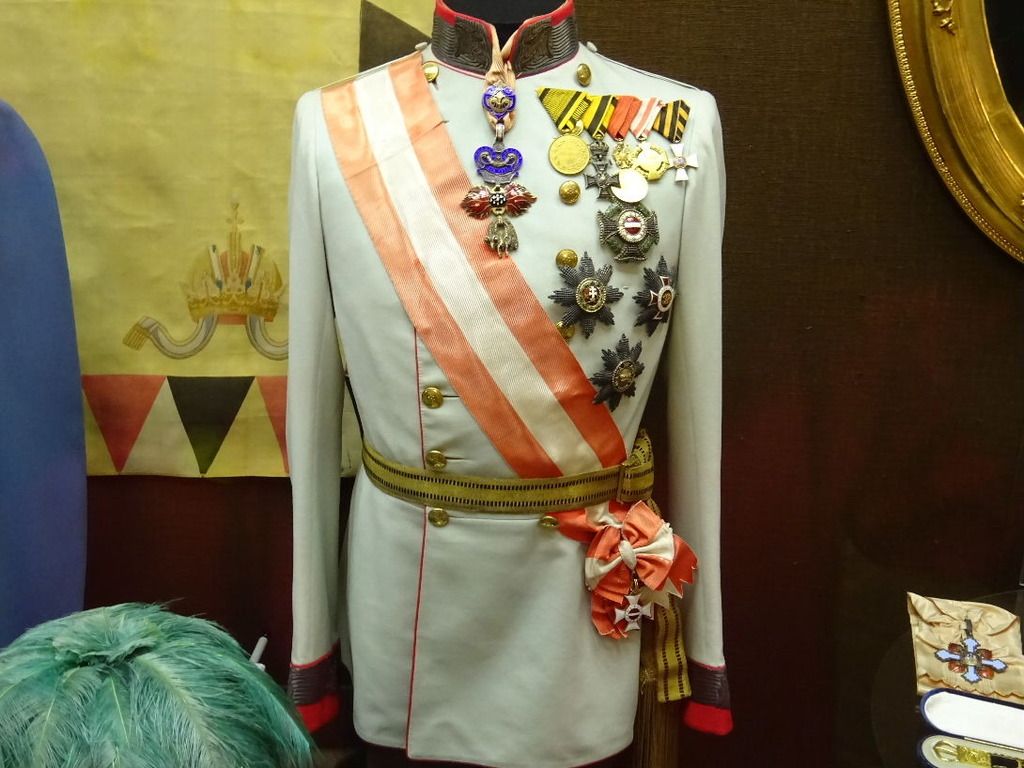 
|
|
#14
|
||||
|
||||
|
|
|
#15
|
||||
|
||||
|
The Sarajevo car display. In this car on 28 Jun 1914 Archduke Francis Ferdinand & his wife Sophie were assassinated. The Archduke was heir to the throne of the Austria-Hungarian empire.
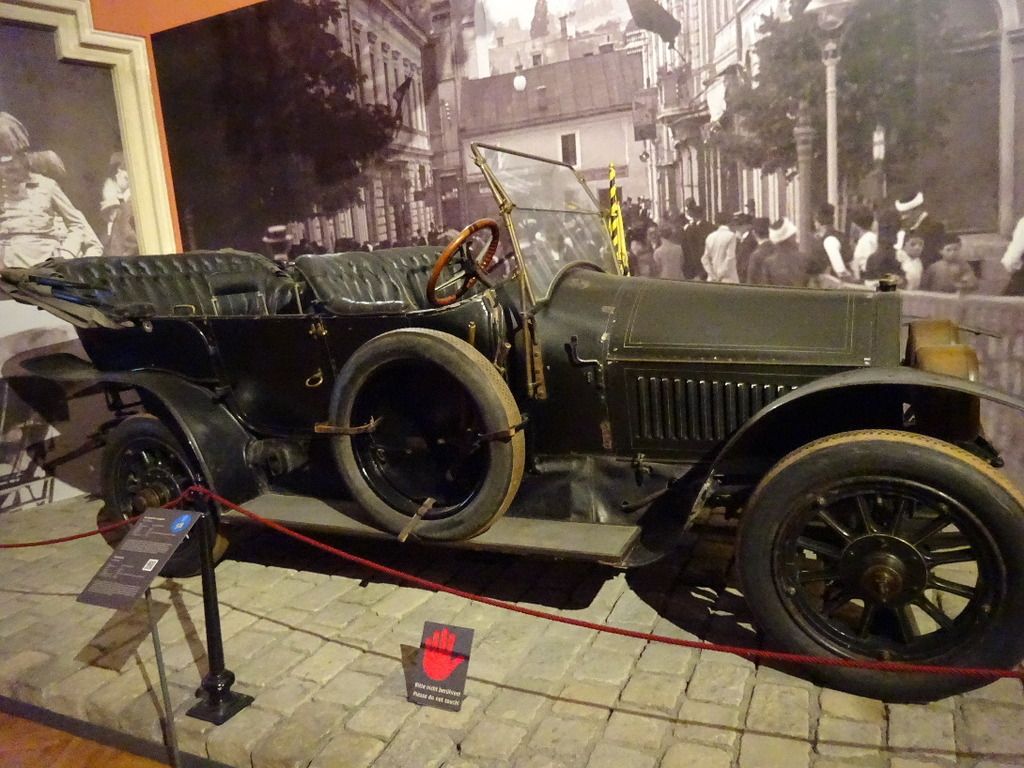 Some details on the car from the museum catalogue: "Manufactured by Graf & Stift in 1910, 4 cylinders, 28/32 H.P.. After the assassination at Sarajevo the car was impounded. The owner, Count Francis Harrach, donated the car to the Emperor who ordered the vehicle to ne moved to the Imperial & Royal Army Museum. From 1914 to 1944 the car was on display in the Hall of the Generals. Around the end of 2WW it was damaged, & after undergoing repairs, was placed in its current location where it has been since 1957." 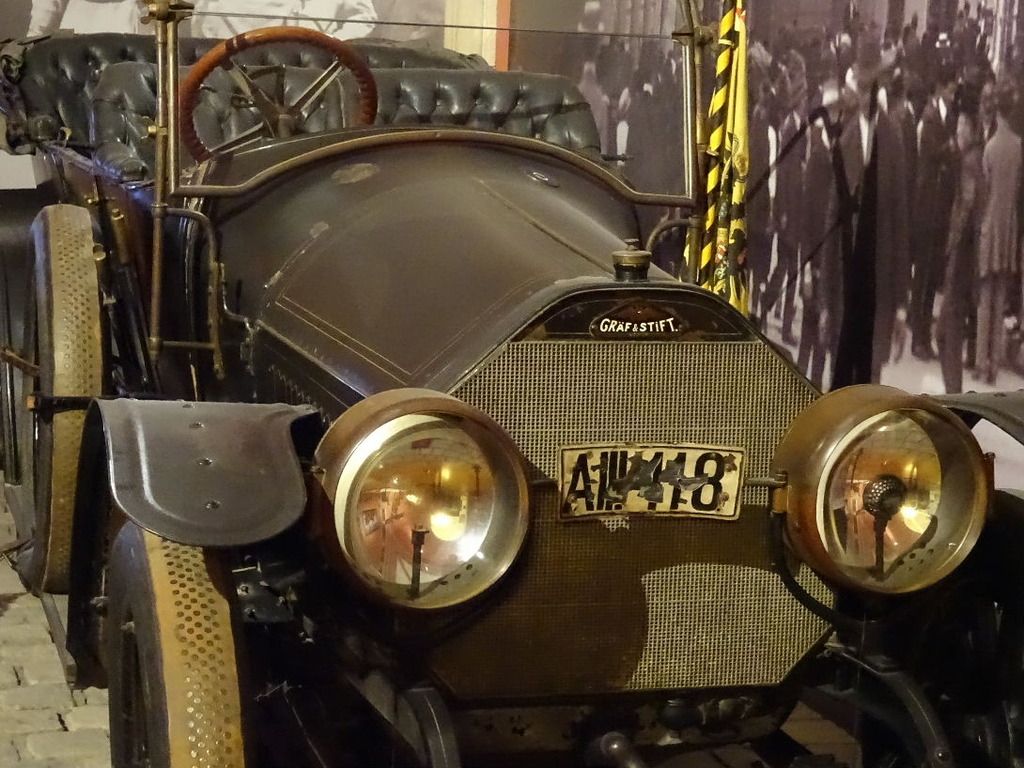 I tried to get a couple shots of the interior of the car but the alarm sounded, which was unexpected. The attendant told me politely to not try again! Last edited by RCN; 09-11-16 at 12:45 PM. |
 |
|
|
 |